The Das Keyboard 'Prime 13' & '4 Professional' Mechanical Keyboard Review
by E. Fylladitakis on January 10, 2017 8:00 AM ESTThe Das Keyboard Prime 13 Mechanical Keyboard
The Das Keyboard Prime 13 shares the same postmodern design of the Das Keyboard 4 Professional, with an aluminum top cover and a plastic lower frame. The company logo is printed at the top right corner of the aluminum cover, in only white color this time. In essence, the Das Keyboard Prime 13 is aesthetically almost the same as the Das Keyboard 4 Professional, except from the missing sound volume wheel and the multimedia buttons. However, beyond aesthetics, there are several practical differences between the two keyboards.
We received the US layout version of the Das Keyboard Prime 13. It is a standard 104-key keyboard that fully adheres to the ANSI layout, with a normal bottom row. The bottom row of the keyboard has a 6.25× Spacebar and seven 1.25× bottom row keys. The left "Windows" key has the Das Keyboard company logo printed on it. The right "Windows" key has been replaced with the "Fn" key that can be used to access advanced functions via keystrokes.
The keycaps of the Das Keyboard Prime 13 have laser etched characters that, in comparison to the Das Keyboard 4 Professional, are significantly larger and moved towards the top center of the keycap. This was the reasonable thing for the designer to do, as the Das Keyboard Prime 13 features LED lighting and reasonably sized characters right above the position of the LED are a necessity.
Much like the Das Keyboard 4 Professional, the Das Keyboard Prime 13 has no macro keys and no programmability options. The extra few multimedia buttons and the volume control wheel are now gone too, with the extra functions that the Das Keyboard Prime 13 capable of performing being accessible via keystrokes. By holding down the Fn key, pressing F1/F2 controls the brightness of the backlighting, F5-F7 offer basic multimedia controls, F9-F11 control the sound volume and the ESC key puts the computer to sleep.
Unlike its more expensive counterpart, the Das Keyboard Prime 13 has only one USB port at the rear top right corner of the keyboard. The port not only is USB 2.0 but it also requires an extra USB connector at the PC's side, as the thick braided cable of the Das Keyboard Prime 13 splits to two USB connectors, one for the keyboard itself and one for its USB port. If the USB port is not going to be used, then the keyboard will function normally with just its main USB connector inserted.
Again, beneath the keycaps we find original Cherry MX switches. This time however the switches have LEDs attached. We also found that Das Keyboard switched to cross-type Cherry stabilizers for all of the keys, which hints that the designer expects that the target group of this keyboard will at least try and remove the keycaps, even if only for cleaning.
The white backlighting of the Das Keyboard Prime 13 is very well applied and stunningly bright. With the LEDs at their maximum brightness, using the keyboard in a very dark room is practically intolerable. A very slightly blueish hue spills around the keycaps, the effect of which is largely enhanced by our camera's lens, from the light bouncing on the black steel plate beneath the keys. We should also mention that the switches of the ESC row have been placed upside down, illuminating the advanced commands that are etched on the front side of the keys. This was an excellent design choice and the visual effect is excellent when viewing the keyboard on a desktop. We should also note that the LEDs will automatically switch off after 10 minutes of inactivity and come back on once a key has been pressed.
Internally, the Das Keyboard Prime 13 has only one PCB, which also is entirely different than that of the Das Keyboard 4 Professional. We noticed no significant quality shortcuts, with the assembly job and materials being of excellent quality. The significant downgrade is the Holtek HT68FB560 microcontroller. With an internal clock of 12 MHz and 16 KB of flash memory, it seems to be majorly inferior to the Nuvoton microcontroller that the Das Keyboard 4 Professional is using, yet it still is more than enough for a keyboard without any programmability options.



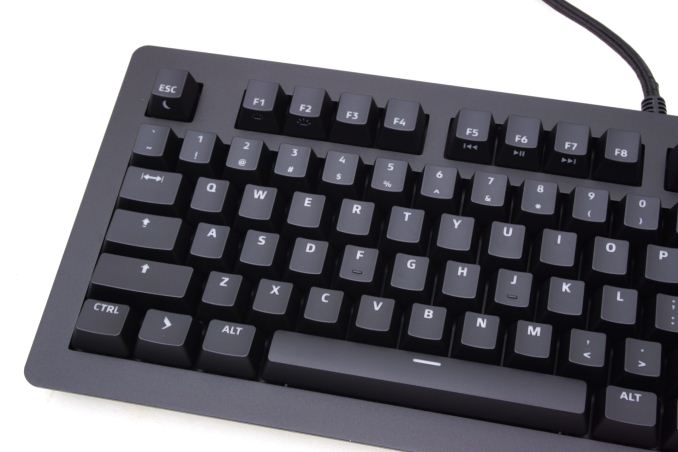
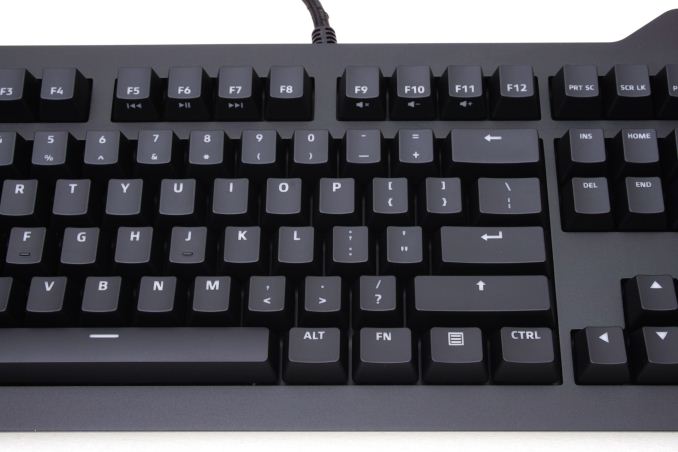
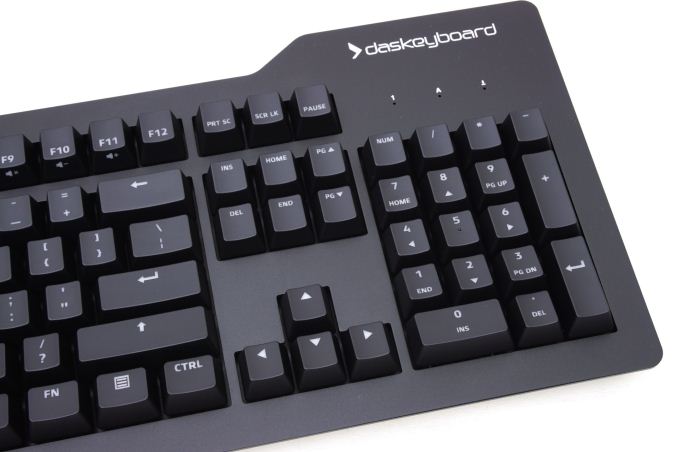

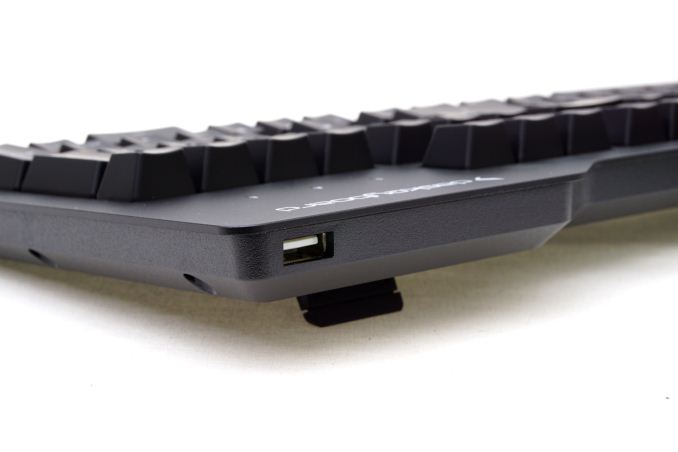
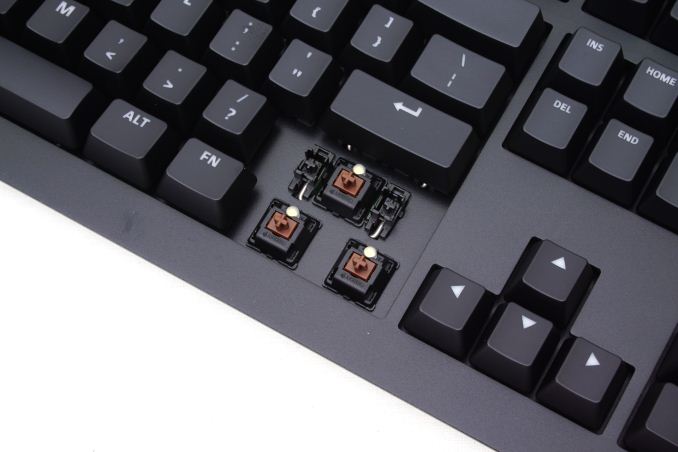
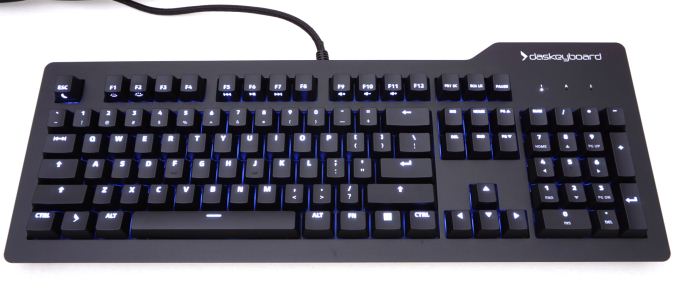
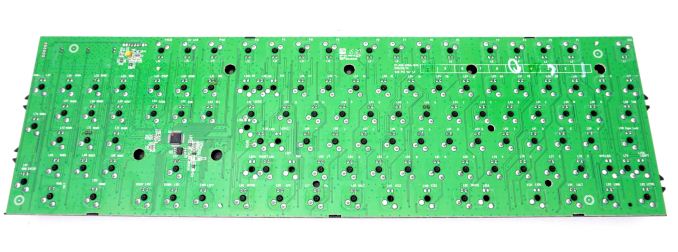
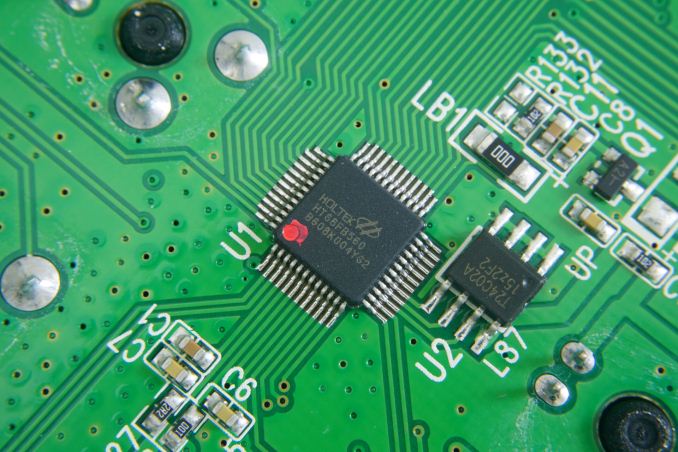








58 Comments
View All Comments
WorldWithoutMadness - Tuesday, January 10, 2017 - link
Please do a review about Topre realforce RGB!Krause - Tuesday, January 10, 2017 - link
I don't think any of these tech sites review the actual high end mechanical keyboards, i've never seen a site like this with a keyboard review/mechanical best of list that actually contained a single keyboard that should be there.Flunk - Tuesday, January 10, 2017 - link
They review what the manufacturers send them.tachi1247 - Tuesday, January 10, 2017 - link
They also can make requests to mfr's for reviews. While smaller sites and individuals will be sent things by manufacturers for reviews to help spread the word about the new product, a site like Anandtech has the industry clout to approach a manufacturer and request a sample for an upcoming article.Holliday75 - Saturday, January 14, 2017 - link
I wonder if Anandtech could....persuade people to turn over samples for testing. Say publish an ever expanding db of devices they requested and either a link to the article or a refusal by the manufacturer to send one. Naturally people will ask why, what are they hiding and could look bad on them.JCB994 - Tuesday, January 10, 2017 - link
What are the high end mechanical keyboards?JoeyJoJo123 - Tuesday, January 10, 2017 - link
The same ones as the low end mechanical keyboards. The difference between Kailh or authentic Cherry MX isn't as noticeable as the difference between $5 rubber dome office keyboard and an average $70 mechanical keyboard.Any further differentiation is pretty absurd and ultimately comes down to brand preference or possibly elitism. The entire point is that mechanical key switches have a MTBF of millions of keystrokes, which is several orders more reliable than rubber dome key switches.
Fallen Kell - Tuesday, January 10, 2017 - link
The difference between a good mechanical keyboard and a crappy one is the same reasoning why rubber dome key switches were invented in the first place, cost cutting. The difference of type of plastic used in a part can be the difference of lasting for 10's of years without reacting to sunlight and oils/grease/dirt from people's hands/fingers or just making it long enough to exceed the keyboard's product warranty. It is the difference between using double-shot keycaps vs "painted and laser etched". A double-shot keycap will never wear out the character on the key from normal use, but laser etched keycaps will wear at some point as the paint does not last forever (unlike physical plastic which will last hundreds of years). The support braces used are another huge area of cost cutting which ultimately affects how well the keyboard survives. And then there is the matter of the switches being properly secured and supported into the PCB (a quick way to cut costs is to skimp on that physical connection, leading to solder points cracking over use as they take the load of the fingers hitting the key).Jetpil0t01 - Sunday, January 15, 2017 - link
I have a Razer Blackwidow Tournament Stealth 2014 and a Das Keyboard 4C Pro TKL and the difference is entirely down to build quality. I actually prefer the typing experience on the Razer, but you can clearly tell the quality of the build of the Das is much better. That being said, I have never had any keyboard in the last 20 years break due to poor build quality of the case, keys, cable or anything else, so its arguable the build quality doesn't add up to much in real terms. I have had the WASD keys on an expensive membrane board get mushy after 5 years of use, but that's still 5 years of use for under $100 which again to me seems trivial as far as the expense of replacing it.I can understand exactly why you would buy the Das Pro model featured here, the USB 3.0 and media controls as well as the clean but sharp aesthetic work perfectly in the office. If you are using it for productivity, the price also becomes trivial, so being higher quality makes sense. Plus there is little to no chance people will be dropping a Corsair RGB into the office without looking like a complete tool, so this seems to hit the target market perfectly.
In the home however, the prime board starts to make little to no sense, outside of brand appeal. If it still had the USB and/or media controls the price might work, but where it is now, there are simply more feature rich products for less money, so it's going to have a tough time selling on build quality alone.
All they needed to do here IMO was take the previous model, drop PBT caps on it, upgrade the hub to USB 3 and keep that in both models and you would have a compelling product. As it is, I would have a hard time recommending this over a Deck or Ducky board for professional or home use and I have had two Das boards previously.
Krause - Tuesday, January 10, 2017 - link
The difference comes down to build quality and keycap material. Any POS that uses clear ABS (garbage plastic) keycaps that are then painted a dark color except for the legend to create cheap backlighting instead of doing true double shots should automatically be given 1 star out of pure principle.On a positive note though, painting (or "coating" in a rubberized spray paint if they try to spin it as a feature) completely negates the importance of using better plastics as the cap material in the first place so it really didn't matter if they used cheap ABS or PBT.